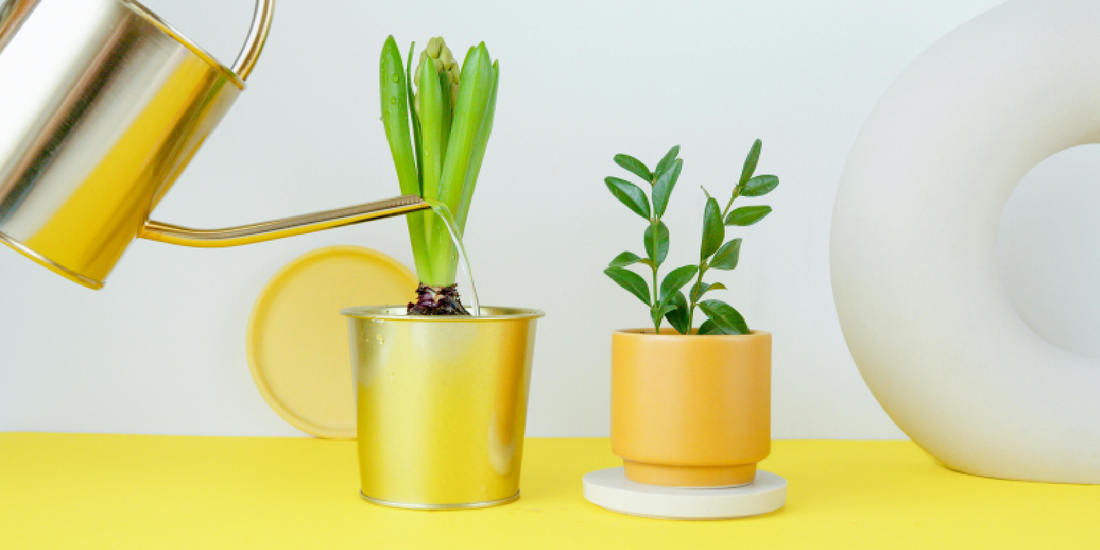
Can Grow Lights Replace Sunlight?
Share
🌿 Introduction: The Quest for Indoor Sunlight
If you're a city dweller, a basement plant enthusiast, or simply someone who enjoys greenery indoors, you've probably asked: Can grow lights truly replace sunlight?
The answer lies at the intersection of plant biology, light spectrum technology, and modern home design. While nothing feels quite like real sunlight, today’s **advanced grow lights—like the full-spectrum LEDs built into the amoyls VerdantGlow Shelf—**come impressively close.
This article will explore:
- How plants use light to grow
- The differences between sunlight and grow lights
- Whether LED grow lights can fully substitute for sunlight
- How to set up your own sun-free indoor garden
Let’s shine some light on the subject—literally and figuratively.
☀️ How Plants Use Light: The Science of Photosynthesis
Plants need light not just to survive, but to thrive. Through photosynthesis, they convert light energy into sugars, fueling their growth.
Key light requirements:
- Blue Light (400–500 nm): Stimulates vegetative growth—leaf development and root strength.
- Red Light (600–700 nm): Encourages flowering and fruiting.
- UV & Far Red Light: Play a supporting role in plant development and stress tolerance.
Sunlight naturally provides the entire spectrum, from UV to far red. So, can grow lights keep up?
💡 What Are Grow Lights, Really?
Grow lights are artificial lighting systems engineered to deliver the specific light wavelengths plants crave.
Types of grow lights include:
- Fluorescent (CFL/T5): Affordable and low-heat, but less efficient for large plants.
- HID (High-Intensity Discharge): Very powerful, but high heat and energy consumption.
- LED (Light Emitting Diode): The most efficient, customizable, and safe for home use.
amoyls' VerdantGlow shelf uses full-spectrum LEDs, optimized for indoor plants—offering consistent red, blue, and white light.
🌈 Comparing Sunlight and Grow Lights: Side by Side
|
Aspect |
Sunlight |
LED Grow Lights (e.g., Amoyls VerdantGlow) |
|
Spectrum |
Full spectrum (natural) |
Full spectrum (tuned to plants’ needs) |
|
Intensity |
Varies with season & weather |
Adjustable, consistent year-round |
|
Availability |
Limited by location & windows |
Anytime, anywhere |
|
Heat Output |
Can overheat in summer |
Minimal heat, safe for indoor use |
|
Design |
Requires sunny window spots |
Integrated into furniture (like amoyls) |
🏠 Real-Life Use Case: Indoor Plant Lovers Without Windows
In many apartments and homes, sunlight is limited or indirect. North-facing windows, tall buildings, and seasonal weather all affect indoor lighting.
Enter the amoyls VerdantGlow 8-Tier Shelf:
A beautifully designed, space-saving indoor garden solution with integrated grow lights, allowing plants to flourish without needing direct sun.
Features include:
- Eight vertically arranged tiers
- Adjustable LED grow light bars on every level
- Sleek, modern design that fits any decor
- Energy-efficient lighting system for year-round growth
With VerdantGlow, your corner becomes a garden, no matter the weather outside.
🪴 Which Plants Thrive Under Grow Lights?
Many popular houseplants adapt well to grow lights—especially if they receive 12–16 hours of artificial light per day.
Top performers include:
- Pothos – Easy care and great under LEDs
- Snake Plant – Tolerates low light but loves consistent LED exposure
- Spider Plant – Thrives with moderate artificial light
- Peace Lily – Needs consistent light for flowering
- Herbs (Basil, Mint, Thyme) – Excellent for culinary gardens under LEDs
🧪 Scientific Studies: What the Research Says
Numerous controlled studies show that full-spectrum LED grow lights can match and even exceed the effectiveness of sunlight in certain settings:
- A 2021 study in the Journal of Horticultural Science found that lettuce grown under LEDs reached maturity faster than those under natural light.
- NASA has been using LED grow lights for years to cultivate plants on the International Space Station.
In other words—grow lights aren’t just an alternative—they’re a legitimate evolution.
🕒 How Long Should You Use Grow Lights Each Day?
Plants need light duration and consistency, not just intensity.
Recommended daily exposure:
- Low-light plants: 8–10 hours/day
- Medium-light plants: 12–14 hours/day
- High-light (flowering/fruiting): 14–16 hours/day
Tip: Use a timer to automate your grow light schedule. The amoyls VerdantGlow shelf is designed with this in mind—set it and forget it.
🧼 Maintenance Tips for LED Grow Light Shelves
To keep your setup running smoothly:
- Clean light bars monthly to avoid dust build-up.
- Check for loose wires or plug connections.
- Replace LEDs every 2–3 years for optimal brightness.
- Wipe down the metal frame and shelf surfaces regularly.
VerdantGlow’s durable design makes maintenance easy and fuss-free.
✨ Aesthetic & Functional: More Than Just a Grow Light
What sets amoyls VerdantGlow apart from DIY grow light setups?
- Design-forward appearance: It’s a decor piece as much as a functional shelf.
- Efficient use of vertical space: Ideal for corners and small apartments.
- Built-in grow light system: No need to hang lights or modify furniture.
- Plant-nurturing design: Open structure promotes airflow and light distribution.
You’re not just growing plants—you’re curating an experience.
🌿 The Verdict: Can Grow Lights Replace Sunlight?
Yes—with the right setup.
While no artificial light can replicate the feeling of basking in the sun, modern LED grow lights can absolutely support healthy plant growth, from foliage to flowers.
And with the amoyls VerdantGlow S-Shaped 8-Tier Plant Shelf, you're not just replacing sunlight—you're upgrading to consistency, efficiency, and elegance.
💬 Final Thoughts: Light Up Your Life, Naturally
If you’ve hesitated to bring greenery into your home because of poor sunlight, it’s time to think differently.
Grow lights are no longer clunky, clinical fixtures—they’re elegant, integrated, and highly effective tools for nurturing plant life indoors.
With the amoyls VerdantGlow shelf, your indoor jungle is only a switch away.
So go ahead—grow boldly, even without the sun.
